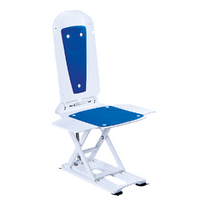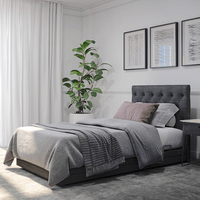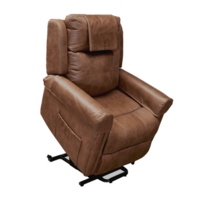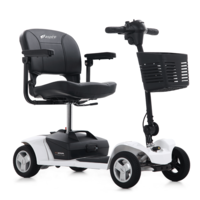How to broach the manual handling topic with a loved one
As someone caring for a loved one, it’s likely that your role has slowly evolved over time. And as time has gone on, you’ve added more physically demanding tasks to your daily routine.
A lot of the caregiving role can involve manual handling. Manual handling refers to activities that involve lifting, pulling, pushing or carrying an individual or an object. So helping your loved one out of bed, pushing them in a wheelchair or helping to lower them into an armchair all involve manual handling.
As a caregiver, manual handling can lead to an increased risk of injury for the caregiver and care recipient if not performed correctly. It’s important to regularly consider the types of tasks you’re doing and whether they’re being carried out in the best way possible for you and your loved one.
For example, you may currently assist a loved one with moving from a chair to a walker by assisting them to stand. But you’re now experiencing some muscle aches or you no longer feel as confident holding their weight. Using a technique such as pulling your loved one up by their hands may also put stress on their shoulder joints as well as your back.
Talking about manual handling tasks with your loved one
Once you’ve identified that the way you’re doing certain tasks needs to change, it’s time to speak with your loved one.
There are a lot of reasons why this conversation might be difficult. If your loved one is experiencing cognitive decline, then they may find a change to their routine upsetting or confusing. Or your loved one may be resistant to the use of assistive devices because they see this as reinforcing their physical limitations. You may also need to discuss manual handling with a loved one who is currently doing certain tasks unassisted and you’ve noticed they’re less steady on their feet.
Whatever the situation, approaching the topic of manual handling with empathy, open communication and practical solutions is the best way to ensure a good outcome for you and your loved one.
Choose the right time and place
Make sure that you broach the conversation when you’re both feeling calm. Choose a relaxed and comfortable location where you can both discuss concerns without distractions. Allow enough time for the discussion to unfold naturally. But be prepared to return to it later if you find that it’s not going as well as you’d like.
Express concern and empathy
Start out by expressing your genuine concern for your loved one’s well being. You can emphasise your intention is to ensure their safety and maintain their independence. Acknowledge their desire for autonomy while also addressing the specific risks involved in certain activities. Encourage your loved one to share their thoughts about their care and your role. Reinforce that your goal is to find a practical solution.
For example, you may be finding it difficult to help your mum get out of her armchair. So the conversation may start with you saying:
“Mum, I've noticed it’s getting much harder to get out of your armchair. I think it’s important that you can still get up even if I’m not able to help. Perhaps we could research getting a new chair that will be easier to get out of. There are even lift recline chairs that can help you stand up on your own. It might be nice to have a chair that reclines and allows you to put your feet up when you’re watching television too.”
Explore options together
You should involve your loved one in the decision making process as much as possible. Discuss various options, such as assistive devices or changes to their surroundings with them. Highlight that these solutions are all about empowering them to perform tasks independently while minimising the physical strain on both of you.
Start by researching options online, comparing products and even watching YouTube videos to see them in action.
Trial and reassess
Once you’ve both agreed to a solution or approach, start with a trial period. Introduce the new technique or device then check in regularly to make sure you’re both happy. Assess and make any adjustments as needed, until you’re both comfortable with the new way of doing things.
Get professional advice
If you’re not sure what techniques or assistive devices to use or how, you can get help from a healthcare professional or occupational therapist who specialises in manual handling and home care. They’ll be able to customise a solution specifically for your loved one’s needs and abilities. They can also review your manual handling technique and provide feedback to prevent injury.
Mobility HQ is one of Australia’s leading providers of mobility aids. Our range of products help with everyday tasks from toileting, bathing, reading, dressing, cooking, eating and gardening.



























